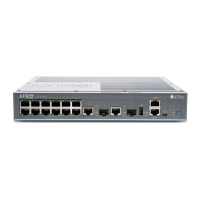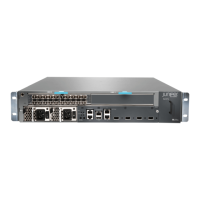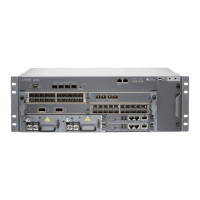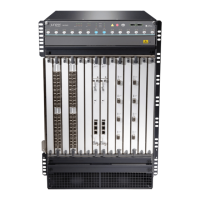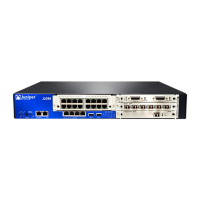3. Specify packet-selection properties:
a.
Specify the number of packets to select:
[edit forwarding-options port-mirroring instance pm-instance-name input]
user@host# set rate number
The valid range is 1 through 65535.
b.
Specify the number of packets to mirror from each selection:
[edit forwarding-options port-mirroring instance pm-named-instance input]
user@host# set run-length number
The valid range is 0 through 20. The default value is 0.
NOTE: The run-length statement is not supported on MX80 routers.
c.
Specify the length to which mirrored packets are to be truncated:
[edit forwarding-options port-mirroring instance pm-instance-name input]
user@host# set maximum-packet-length number
The valid range is 0 through 9216. The default value is 0, which means the mirrored
packets are not truncated.
NOTE: The maximum-packet-length statement is not supported on
MX80 routers.
4. Enable configuration of the mirror destination properties for Layer 2 packets that are
part of bridging domain, Layer 2 switching cross-connects, or virtual private LAN service
(VPLS):
a.
Specify the Layer 2 address family type of traffic to be mirrored:
[edit forwarding-options port-mirroring instance pm-instance-name input]
user@host# up
[edit forwarding-options port-mirroring instance pm-instance-name]
user@host# edit family family
The value of the family option can be ethernet-switching, ccc, or vpls.
NOTE: Under the [edit forwarding-options port-mirroring] hierarchy
level, the protocol family statement family ethernet-switching is an alias
for family vpls. The command-line interface (CLI) displays Layer 2
port-mirroring configurations as family vpls, even for Layer 2
port-mirroring configured as family ethernet-switching. Use family
ethernet-switching when the physical interface is configured with
encapsulation ethernet-bridge.
Enable configuration of the mirror destination properties:
25Copyright © 2016, Juniper Networks, Inc.
Chapter 5: Port Mirroring Instances
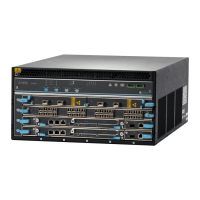
